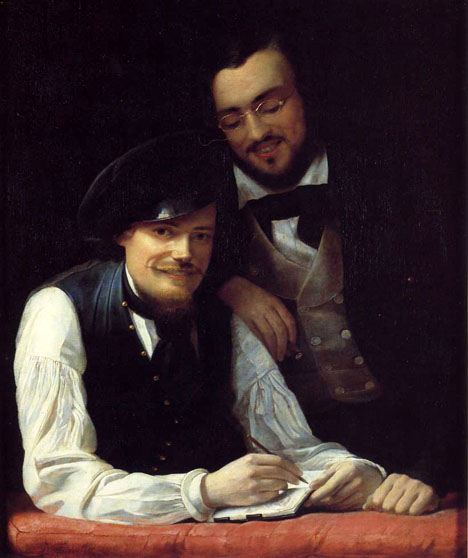
German Academic Classical Painter & Printmaker
1805 - 1873

Franz Xaver Winterhalter was a German painter and lithographer, known for his portraits of royalty in the mid-nineteenth century. His name has become associated with fashionable court portraiture. Among his best known works are Empress Eugénie Surrounded by her Ladies in Waiting (1855) and the portraits he made of Empress Elisabeth of Austria (1864).
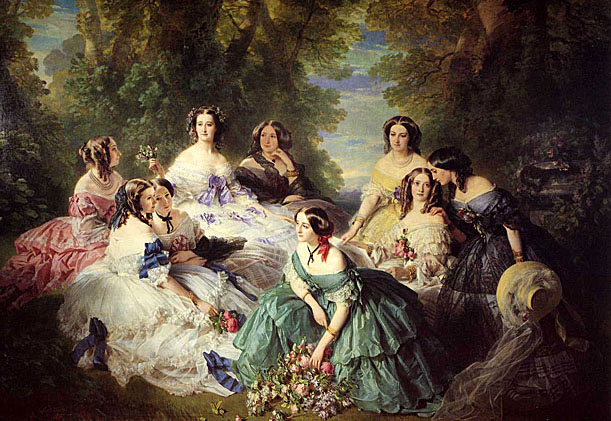
This prestigious evocation of the second imperial France stresses the sparkling charm of the court of Napoleon III, which contrasts sharply with the dull years of the reign of bourgeois Louis-Philippe.
Whether the Tuileries, Fontainebleau or Compiègne, the lavish life of the Second Empire court is the tangible sign of the apparent strength of the new regime and an unprecedented economic prosperity, celebrated by the first World Exposition held in Paris in 1855.
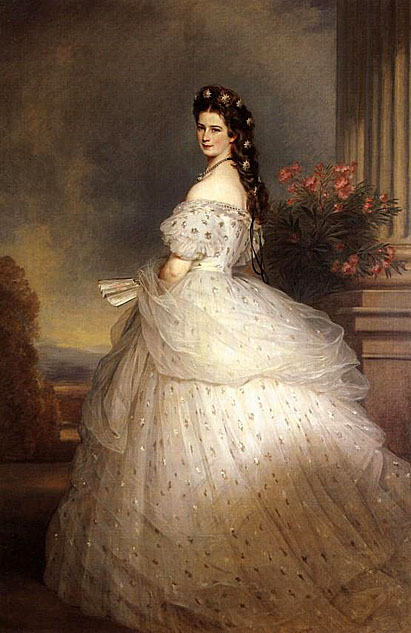
Franz Xaver Winterhalter was born in the small village of Menzenschwand in the Black Forest, Grand-Duchy of Baden on 20 April 1805. He was the sixth child of Fidel Winterhalter, a farmer and resin producer in the village, and his wife Eva Meyer, a member of a long established Menzenschwand family. His father was of peasant stock and was a powerful influence in his life. Of the eight brothers and sisters, only four survived infancy. Throughout his life, Franz Xaver remained very close to his family in particular to his brother Hermann (1808-1891), who was also a painter.
After attending school at a Benedictine monastery in Blasien, Winterhalter left Menzenschwand in 1818 at the age of thirteen to study drawing and engraving. He trained as a draughtsman and lithographer in the workshop of Karl Ludwig Shuler (1785-1852) in Freiburg. In 1823, at the age of eighteen, he went to Munich, sponsored by the industrialist Baron Eichtal. In 1825, he was granted a stipend by the Grand Duke of Baden and he began a course of study at the Academy of Arts in Munich with Peter Cornelius, whose academic methods made him uncomfortable. Winterhalter found a more congenial mentor in the fashionable portraitist Joseph Stieler. During this time, he supported himself working as lithographer.
Winterhalter entered court circles when in 1828 he became drawing master to Sophie Margravine of Baden, at Karlsruhe. His opportunity to establish himself beyond southern Germany came in 1832 when he was able to travel to Italy, 1833-1834, with the support of Grand Duke Leopold of Baden. In Rome he composed romantic genre scenes in the manner of Louis-Leopold Robert and attached himself to the circle of the director of the French Academy, Horace Vernet. On his return to Karlsruhe, he painted the portraits of the Grand Duke Leopold of Baden and his wife, and was appointed painter to the grand-ducal court.

Nevertheless, he left Baden to move to France where his Italian genre scene Il dolce Farniente attracted notice at the Salons of 1836. Il Decameron a year later was also praised; both paintings are academic compositions in the style of Raphael. In the salon of 1838 he exhibited a portrait of the Prince of Wagram with his young daughter. His career as a portrait painter was soon secured when in the same year he painted Louise Marie of Orleans, Queen of the Belgians, and her son. It was probably through this painting that Winterhalter came to the notice of Maria Amalia of the Two Sicilies Queen of the French, mother of the Queen of the Belgians.
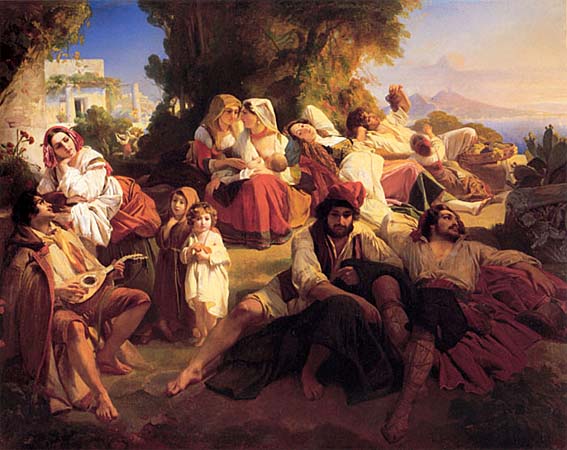
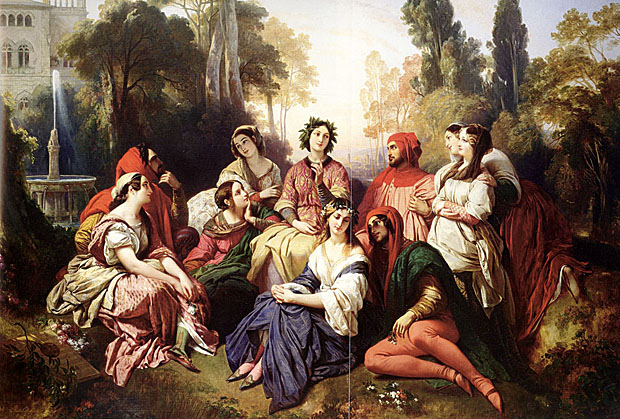
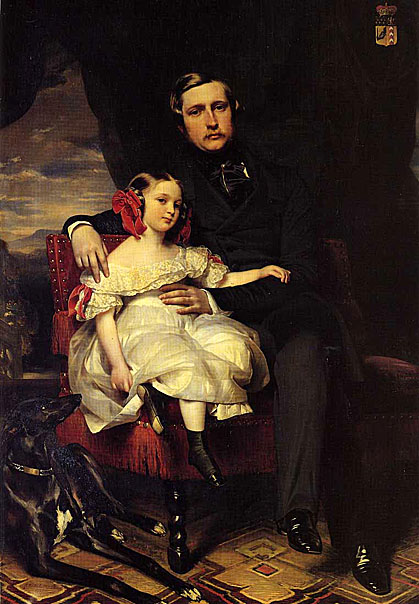

In Paris, Winterhalter quickly became fashionable. He was appointed court painter of Louis-Philippe, the king of the French, who commissioned him to paint individual portraits of his large family. Winterhalter would execute more than thirty commissions for him.
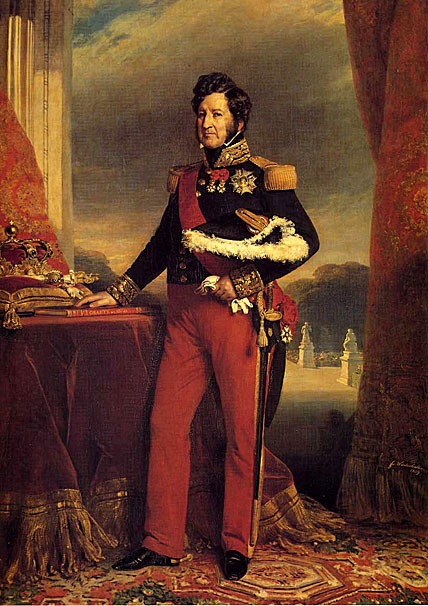
This success earned the painter the reputation of a specialist in dynastic and aristocratic portraiture, skilled in combining likeness with flattery and enlivening official pomp with modern fashion.
However, Winterhalter's reputation in artistic circles suffered. The critics, who had praised his debut in the salon of 1836, dismissed him as a painter that could not be taken seriously. This attitude persisted throughout Winterhalter's career, condemning his work to a category of his own in the hierarchy of painting. Winterhalter himself regarded his first royal commissions as a temporary intermission before returning to subject painting and the field of academic respectability, but he was a victim of his own success and for the rest of his life he would work almost exclusively as a portrait painter. This was a field in which he was not only very successful but also made him rich. Winterhalter became an international celebrity enjoying Royal patronage.
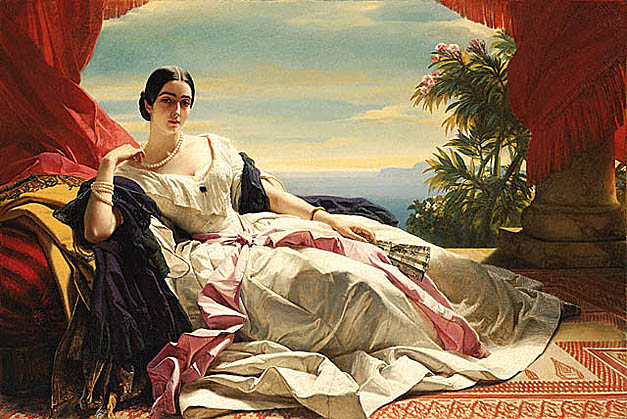
Known for her great beauty and intellect, the Princess is resplendent in a luxurious gown of ivory silk moiré with a pink sash around her waist. A deep purple mantle wraps around her back and falls across her smooth arms. Under carefully arched eyebrows, her heavy lidded eyes gaze languidly at the viewer while she artfully toys with the large pearls around her neck. Winterhalter contrasted sumptuous fabrics and vivid colors against creamy flesh to heighten the sensuality of the pose, the model, and the luxuriant setting.
Among his many regal sitters was also Queen Victoria. Winterhalter first visited England in 1842, and returned several times to paint Victoria, Prince Albert and their growing family, painting at least 120 works for them - a large number of which remain in the Royal Collection, on display to the public at Buckingham Palace and other locales. Winterhalter also painted a few portraits of the aristocracy in England, mostly members of court circles. The fall of Louis-Philippe in 1848 did not affect the painter's reputation. Winterhalter went to Switzerland and worked in commission in Belgium and England.
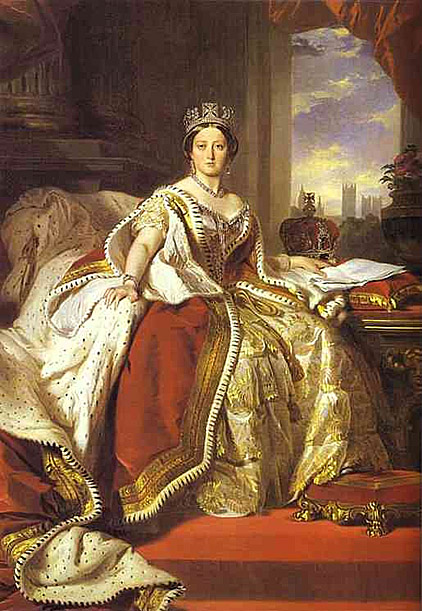
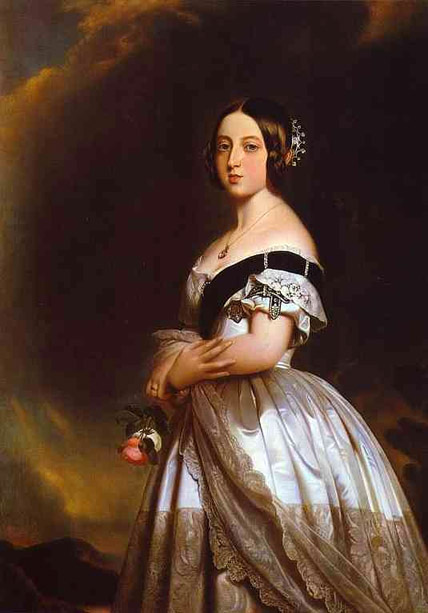
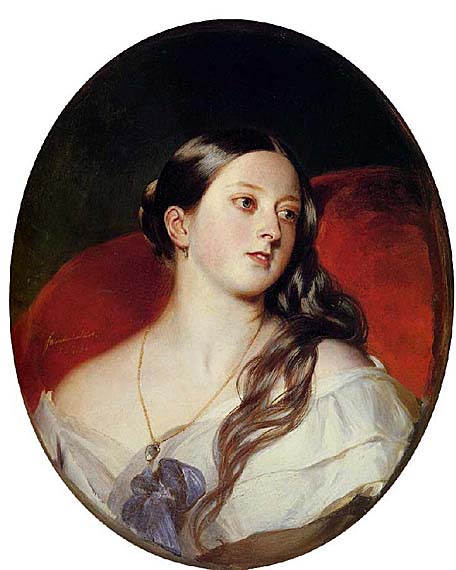
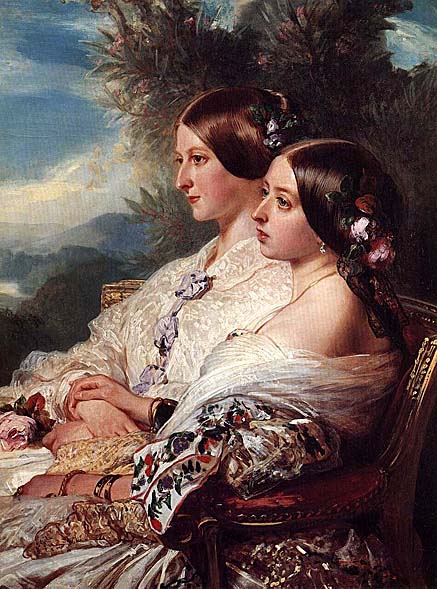
Victoria of Saxe-Coburg-Saalfeld-Kohary was the daughter of Prince Ferdinand of Saxe-Coburg-Saalfeld and Princess Antonie de Kohary. Her father was the second son of Francis Frederick, Duke of Saxe-Coburg-Saalfeld and Augusta Reuss-Ebersdorf.
On 27 April 1840, in Saint-Cloud, she married Louis d'Orléans, Duc de Nemours.

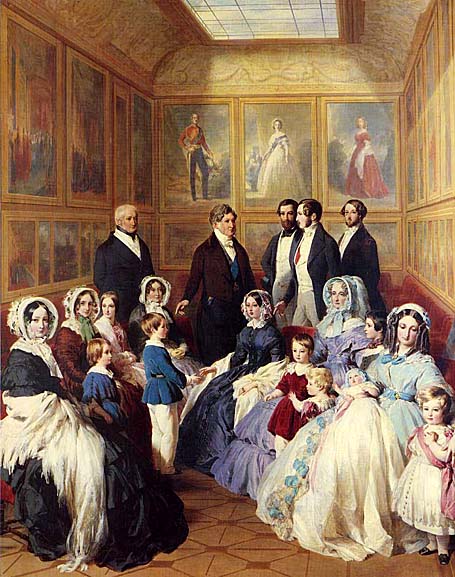
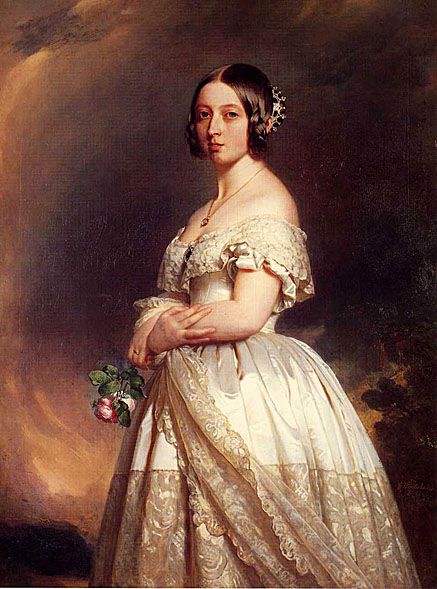

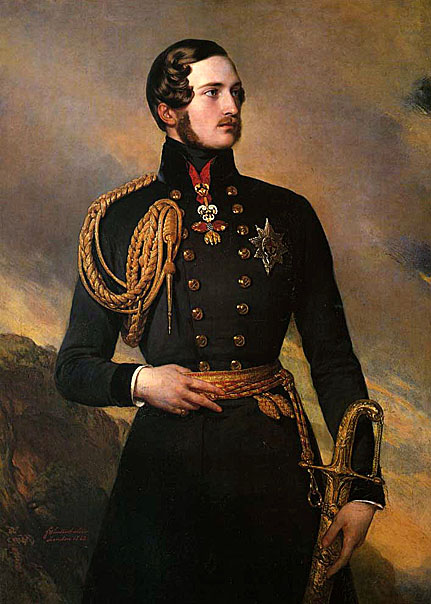
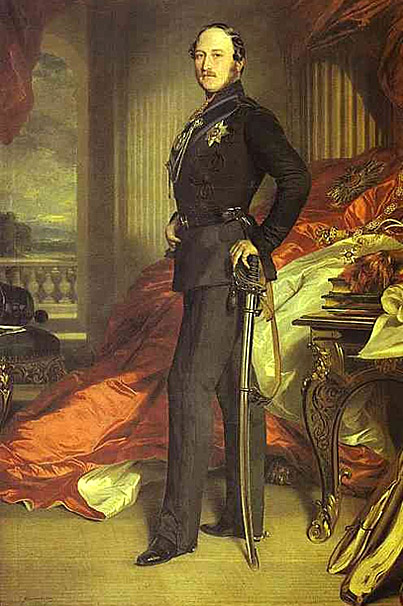
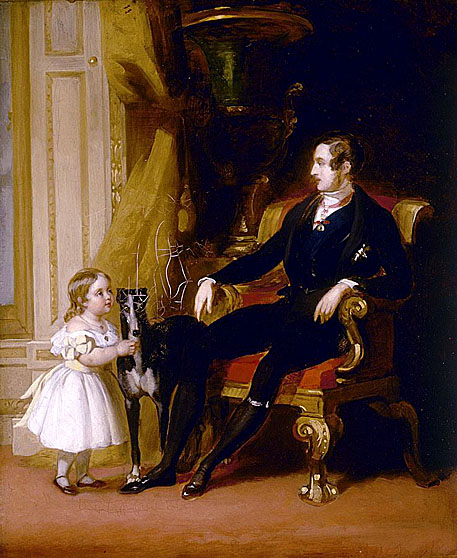
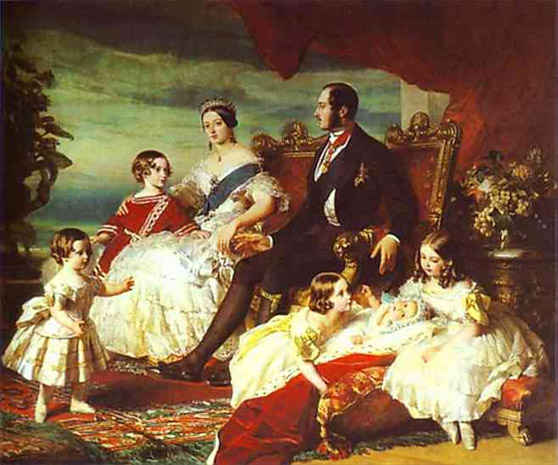
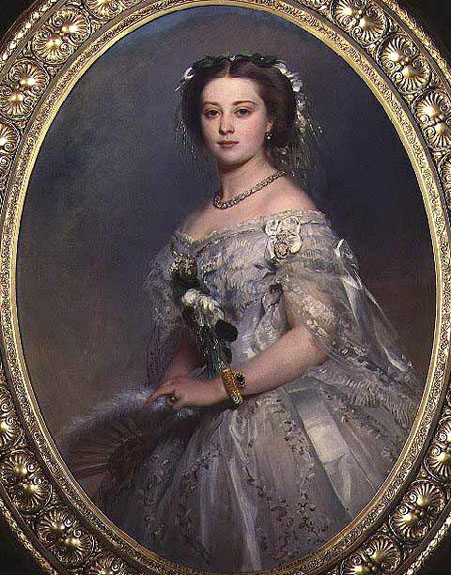
_1867.jpg)
Edward VII of the United Kingdom
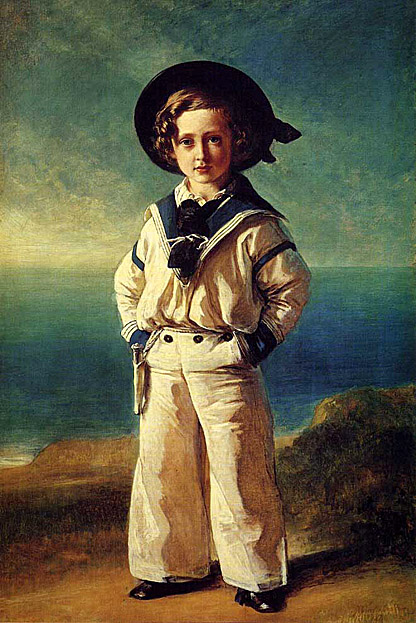
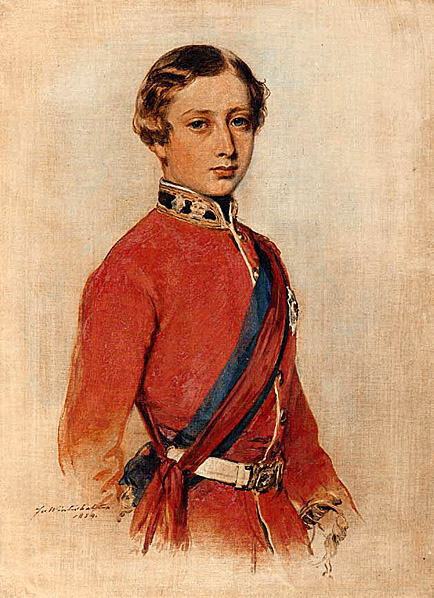
Princess Alice of the United Kingdom
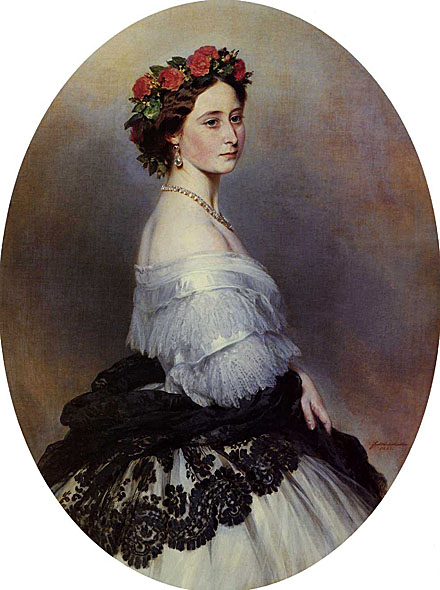
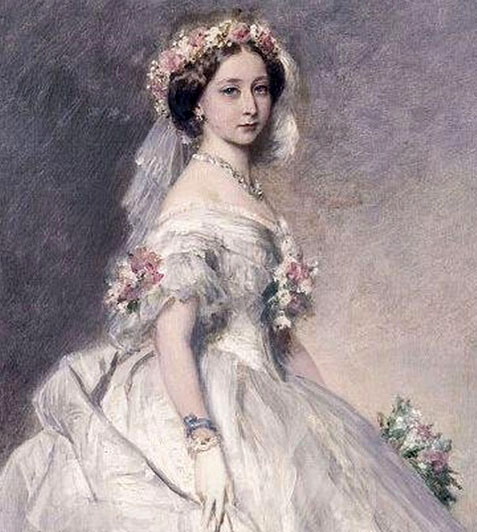
Alfred, Duke of Saxe-Coburg and Gotha
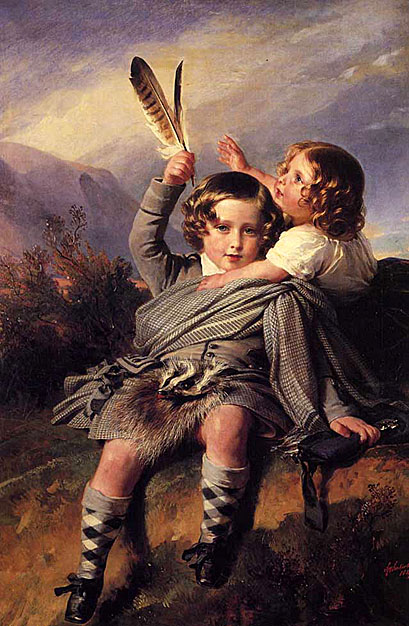
Princess Helena of the United Kingdom
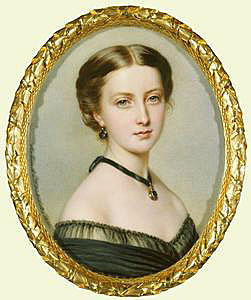
Princess Louise, Duchess of Argyll
Prince Arthur, Duke of Connaught and Strathearn
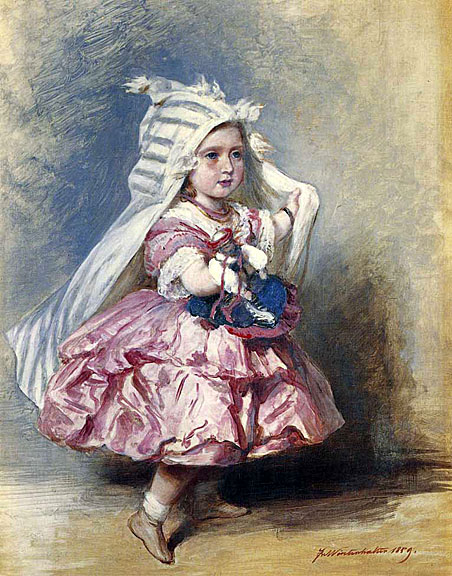
Persistence saw Winterhalter survived from the fall of a dynasty to the rise of another. Paris remained his home until a couple of years before his death. A halt in portrait commissions in France allowed him to return to subject painting with Florinda (1852) (Metropolitan Museum of Art, New York), a joyous celebration of female beauty inspired by a Spanish legend. In this same year he made a marriage proposal but was rejected, Winterhalter remained a bachelor committed to his work.
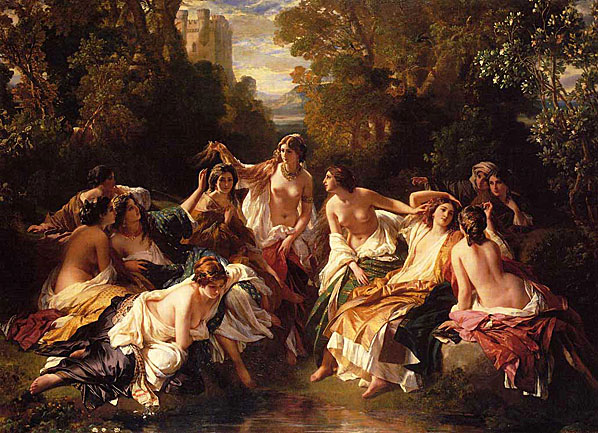
After the accession of Napoleon III, his popularity grew. From then on, under the Second Empire, Winterhalter became the chief portraitist of the imperial family and court of France. The beautiful French Empress Eugénie became a favorite sitter and she treated him generously. In 1856 Winterhalter painted his masterpiece: The Empress Eugénie Surrounded by her Ladies in Waiting. He set the French Empress in pastoral setting gathering flowers in a harmonious circle with her ladies in waiting. The painting was acclaimed, and exhibited in the universal exposition in 1853 and remains Winterhalter's most famous work.
In 1852, he went to Spain to paint Queen Isabella II and worked for the Portuguese royal family. Russian aristocratic visitors to Paris also liked to have their portraits executed by the famous master. As the "Painter of Princes", Winterhalter was thereafter in constant demand by the courts of Britain (from 1841), Spain, Belgium, Russia, Mexico, the German courts, and France. In the following years Winterhalter was in high demand, and in 1856 he went to Poland to paint for the aristocracy there and in 1857 in Upper Bavaria he painted the Tsarina Maria Alexandrovna. Over the course of the next years he painted many Russian commissions through the 1860's.
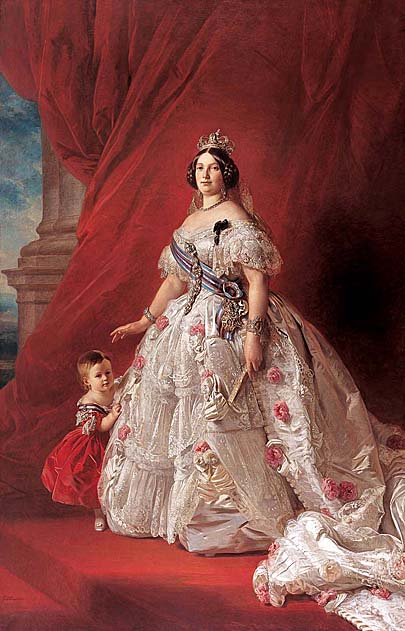
Born in Madrid on Oct. 10, 1830, Isabella was the daughter of Ferdinand VII of Spain and Maria Cristina of Naples. Her uncle Don Carlos refused to recognize her right to the throne, and after the death of Ferdinand in late 1833 a bitter civil war broke out between the conservative elements, who supported Don Carlos, and the liberal groups, who supported the young princess and her mother, the Queen Regent. The Carlists were defeated in 1839, but the following year Baldomero Espartero, a liberal and the most powerful general in the country, forced Maria Cristina to leave Spain. Isabella remained behind.
Three years later, the conservatives overthrew Espartero and his liberal supporters and on Nov. 8, 1843, had 13-year-old Isabella declared legally of age and crowned queen. Isabella's education had been meager; she could scarcely read and was by all accounts relatively ignorant. But she was highly attractive and utterly charming. Between 1843 and 1868 Isabella reigned but did not rule. During most of this period Spain was governed by a coalition of civilian conservatives and army generals.
On Oct. 10, 1846, Isabella married her cousin Francisco de Asis. Now an attractive 16-year-old, she was generous, friendly, fond of dancing, and amorous, and the timid and effeminate Francisco was a great disappointment to her. On the day after the wedding he moved out of the Queen's quarters, and her first lover, the handsome Gen. Serrano, moved in. He was to be the first of many, until her active sex life (or what an English observer called her "terrible constitutional malady") was the talk of all Europe. Yet she considered herself a devout Catholic and was very much under the influence of the superstitious and often fanatical nuns and monks who surrounded her at court.
Isabella's scandalous private life, her antiliberalism, and Spain's economic crisis of 1866 brought about a popular revolution in September 1868. Isabella fled to France, and, on June 25, 1870, she abdicated in favor of her son Alfonso XII. He was crowned king of Spain in early 1875, after the republic which had been set up in 1873 was abolished.
In exile Isabella retained her enjoyment of men and fondness for dancing. However, the defeat of Spain in 1898 seems to have broken her spirit; after that year her health began to fail, and on April 19, 1904, she died in her Paris home.
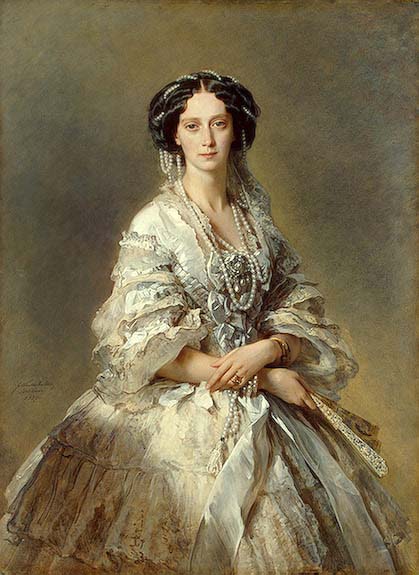
During the Second Mexican Empire in the 1860's, headed by Maximilian I of Mexico, Winterhalter was commissioned to paint portraits of the Imperial couple. The Empress Consort of Mexico, Charlotte of Belgium was the daughter of Louise-Marie of France, Queen of the Belgians, who had used Winterhalter at the beginning of his career in France. Some of Winterhalter's paintings of the Mexican monarchs still remain in their Mexico City palace, now the National Museum of History.

There is well-documented suspicion that Maximilian was not the product of a union between Princess Sophie and Franz Karl. Many Europeans and Viennese in particular, suspected that he was actually fathered by Napoleon II (son of Napoleon I and Marie Louise of Austria as Napoleon Francois Joseph Charles Bonaparte, also known as the Duke of Reichstadt). Those who subscribe to this belief cite the unnaturally close relationship that existed between Sophie and Napoleon II (it was said that Sophie never recovered after his death and that she blamed it on Metternich for the rest of her life) and that, from birth, Maximilian's stature resembled Napoleon II's more than that of Franz Karl, his older brother, and his younger brothers. He was a particularly clever boy, showing considerable taste for the arts and displaying an early interest in science, especially botany. He was trained for the navy, and threw himself into this career with so much zeal that he quickly rose to high command, and was instrumental in creating the naval port of Trieste[citation needed] and the fleet with which Admiral Wilhelm von Tegetthoff won his victories in the Italian War. Very much influenced by the progressive ideas in vogue at the time, he had some reputation as a liberal, and this led, in February 1857, to his appointment as viceroy of the Kingdom of Lombardy-Venetia.
He married his second cousin Princess Charlotte of Belgium (also known as Empress Carlota of Mexico), daughter of Leopold I, King of the Belgians and of Louise-Marie of France, on July 27, 1857, in Brussels, Belgium. They had no children.

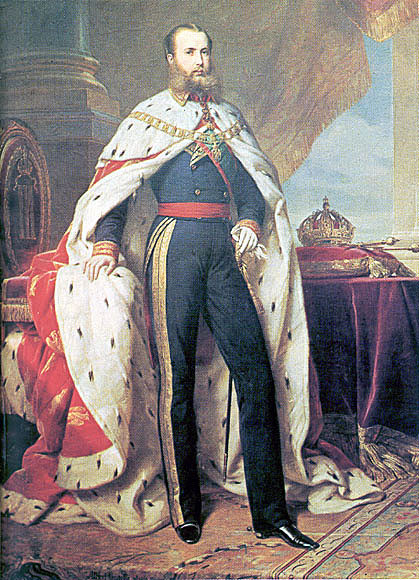

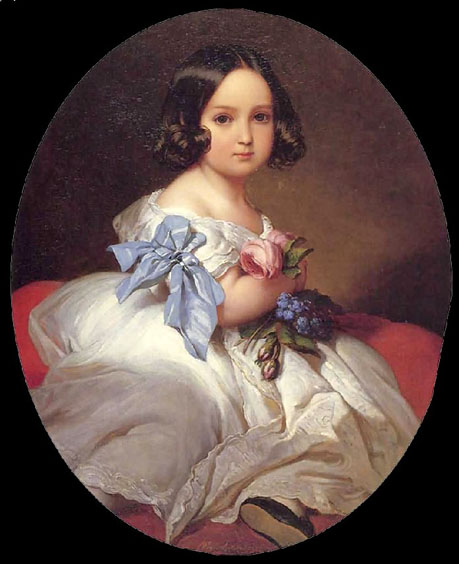
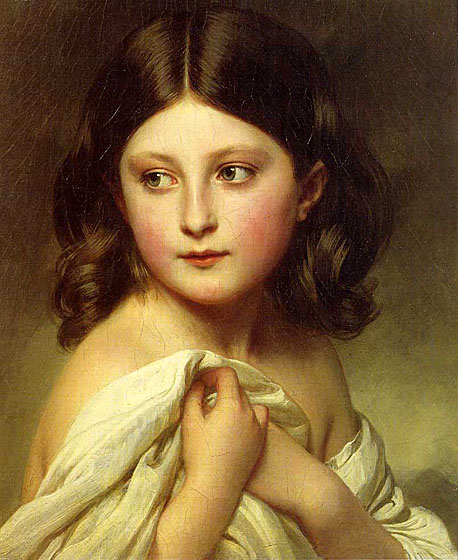
To deal with the pressure of portrait commissions, many of them calling for multiple replicas, Winterhalter made extensive use of assistants. No portrait painter ever enjoyed such an extraordinary royal patronage as Winterhalter, only Rubens and Van Dyck worked as he did in an international network.
Winterhalter sought respite from the pressures of his work with holidays abroad in Italy, Switzerland and above all in Germany. In spite of his many years living in France, he remained deeply attached to his native country. For all his success and popularity, Winterhalter continued to live simply and abstemiously. In 1859 he bought a villa in Baden-Baden, his favorite vacation spot.

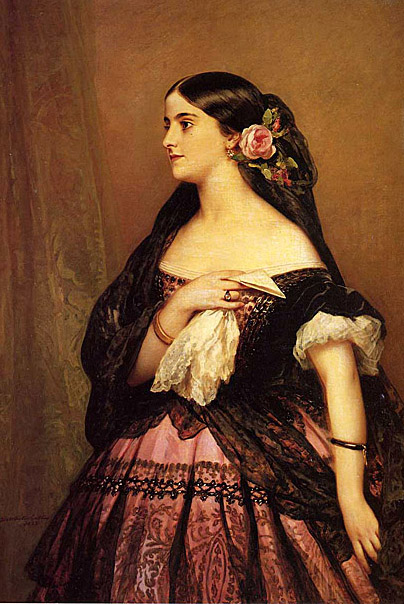
Considered, along with contemporaries Jenny Lind and Christina Nilsson, to be one of the most famous 19th Century sopranos; Giuseppe Verdi was not alone in calling her the greatest singer he ever heard.
Patti was born Adela Juana Maria Patti, the last child of Caterina Barili-Patti (d. 1870) and Salvatore Patti (1800-1869), Italian parents working in Madrid, Spain. Her father was Sicilian and so Patti was born a subject of the King of the Two Sicilies. She later carried a French passport, as her two first husbands were French. Like many great singers, she came from a singing family. Both her parents, tenor Salvatore Patti and soprano Caterina Barilli, were singers. Her sisters Amalia and Carlotta Patti were also singers. In her childhood the family moved to New York City: Patti grew up in The Bronx, where her family's home is still standing. Patti sang professionally from childhood, and developed into a coloratura soprano. It is believed that Patti learned much of her singing technique from her brother in law Maurice Strakosch, although later in life Patti, like many famous singers, claimed that she was entirely self-taught.
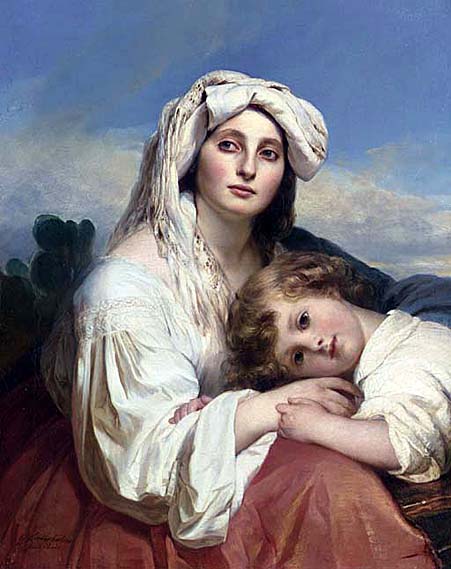
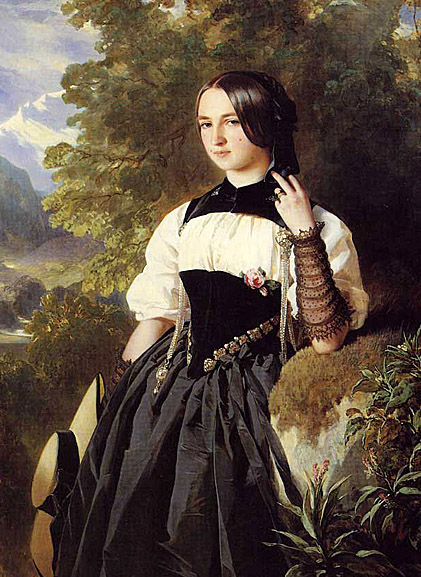
In 1864 Winterhalter made his last visit to England. In the autumn of that year he traveled to Vienna to execute the portraits of Emperor Franz Joseph and Empress Elizabeth that remain among his most well-known works. As he grew older, Winterhalter links with France weakened while his interest in Germany grew. He was taken a cure in Switzerland at the outbreak of the Franco-Prussian War that ended the Second French Empire in September 1870. After the war, the painter did not return to France going instead to Baden. Without traumatism, he decided to retire in Germany. He was officially still accredited at the court of Baden and he settled in Karlsruhe. In the last two years of his life Winterhalter painted very little. During a visit to Frankfurt am Main in the summer of 1873 he contracted typhus and died on 8 July 1873. He was sixty-eight years old.
Winterhalter came into his own as a portrait painter during the second Empire and he painted his best work during the last two decades of his life. He matched his style to the luxury and relaxed atmosphere of the age, its hedonism and gaiety. His female sitters of the 60's and 50's inhabit a different physiological climate from those he painted earlier, they are not reticent and reserved. His male sitters inspired few original or memorable compositions.
Winterhalter never received high praise for his work from serious critics, being constantly accused of superficiality and affectation in pursue of popularity. However, he was highly appreciated by his aristocratic patrons. The royal families of England, France, Spain, Russia, Portugal, Mexico and Belgium all commissioned him to paint portraits. His monumental canvases established a substantial popular reputation, and lithographic copies of the portraits helped to spread his fame.
Winterhalter's portraits were prized for their subtle intimacy; the nature of his appeal is not difficult to explain. He created the image his sitters wished or needed to project to their subjects. He was not only skilled at posing his sitters to create almost theatrical compositions, but also was a virtuoso in the art of conveying the texture of fabrics, furs and jewelry, to which he paid no less attention than to the face. He painted very rapidly and very fluently, designing most of his compositions directly in the canvas. His portraits are elegant, refined life-like and pleasantly idealized.
Concerning Winterhalter's method of working, it is thought that, practiced as he was at drawing and representing figures, he painted directly onto the canvas without making preliminary studies. He himself decided onto the dress and pose of the sitter. He painted in a smooth style, using quick but impersonal brush strokes. His style was suave, cosmopolitan and plausible. Many of the portraits were copied in his workshop or reproduced as lithographs.
As an artist he remained a difficult figure to place, there are few painters with whom to compare him and he does not fit into any school. His early affinities were Neoclassical but his style can be described as Neo-Rococo. After his death, his painting fell out of favor being considered romantic, glossy, and superficial. Little was known about him personally and his art was not taken seriously until recently. However, a major exhibition of his work at the National Portrait Gallery in London and the Petit Palais in Paris in 1987 brought him into the limelight again. His paintings are exhibited today in leading European and American museums.
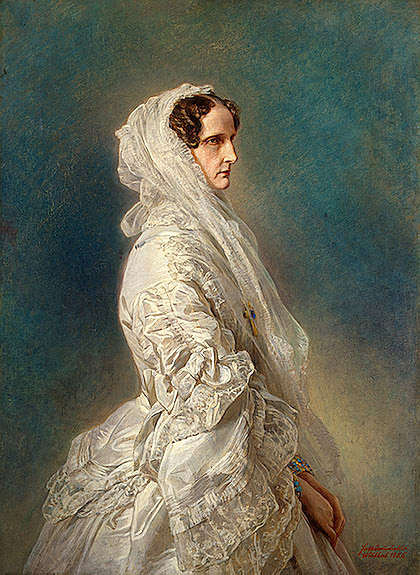
Alexandra Feodorovna became Empress-Consort upon her husband's accession as Tsar Nicholas I on December, 1825. It was a turbulent period, marked by the bloody repression of the Decembrist revolt.
By 1832 Nicholas and Alexandra had seven children whom they raised with care. Nicholas I never wavered in his love for his wife, whom he nicknamed "Mouffy". In 1837, when much of the Winter Palace was destroyed by fire, Nicholas reportedly told an aide-de-camp, "Let everything else burn up, only just save for me the small case of letters in my study which my wife wrote to me when she was my betrothed."
Only after more than twenty-five years of fidelity did Nicholas take a mistress. He turned to Barbara Nelidova, one of Alexandra's ladies-in-waiting, as the doctors had forbidden the Empress from sexual activity due to her poor health and recurring heart-attacks. Nicholas continued to seek refuge from the cares of state in Alexandra's company. "Happiness, joy, and repose - that is what I seek and find in my old Mouffy." he once wrote.
In 1845, Nicholas wept when Court doctors urged the Empress to visit Palermo for several months due to poor health. "Leave me my wife." He begged her physicians, and when he learned that she had no choice, he made plans to join her, if only for a brief time. Nelidova went with them, and though Alexandra was jealous in the beginning, she soon came to accept the affair, and remained on good terms with her husband's mistress.
The Empress Alexandra Feodorovna was always frail and in bad health. At forty, she looked far older than her years, becoming increasingly thin. For a long time, she suffered from a nervous twitching that became a convulsive shaking of her head.
In 1837 the Empress chose the resort in the Crimea for a new residence. There, Nicholas ordered that the Palace of Oreanda be built for her. She was only able to visit the Palace once however; the Crimean War began in 1852. Towards the end of 1854, Alexandra Feodorovna became very ill, and she came very close to death , though she managed to recover. In 1855 Tsar Nicholas I contracted influenza, and he died on 6/18 February. She died in her sleep at the age of sixty-two on November 1, 1860 at Alexander Palace in Tsarskoe Selo.
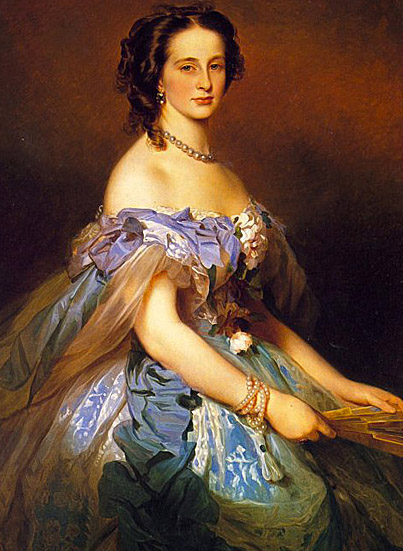
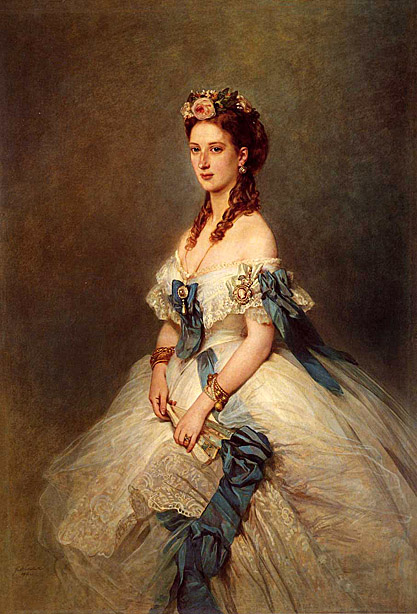
Her family had been relatively obscure until her father was chosen with the consent of the Great powers to succeed his distant cousin to the Danish throne. At the age of sixteen she was chosen as the future wife of Albert Edward, Prince of Wales, the heir of Queen Victoria, and married him eighteen-months later. As Princess of Wales from 1863 to 1901, the longest anyone has ever held that title, she won the hearts of the British people and became immensely popular; her style of dress and bearing were copied by fashion-conscious women.
On the death of Queen Victoria in 1901, Albert Edward became King-Emperor as Edward VII, with Alexandra as Queen-Empress Consort. From Edward's death in 1910 until her own death, she was the Queen Mother, being a queen and the mother of the reigning monarch, George V of the United Kingdom, though she was more generally styled Her Majesty Queen Alexandra.
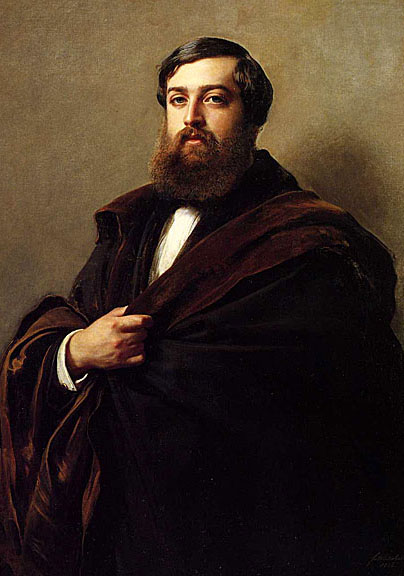

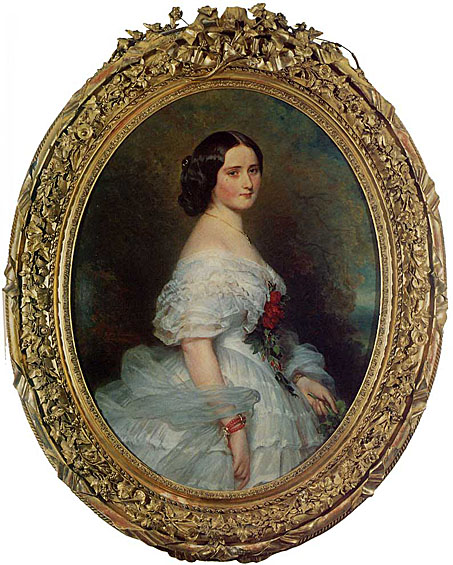
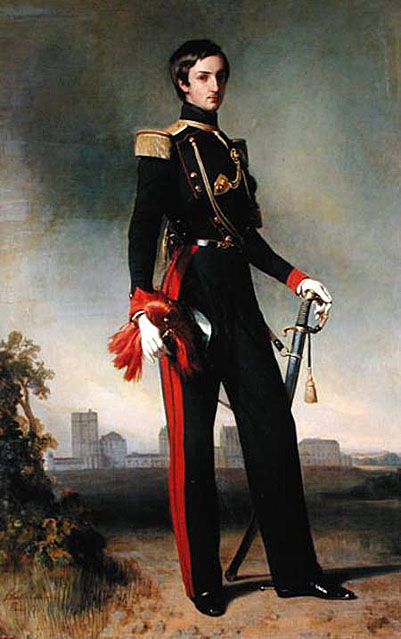
He was born on 31 July 1824 at the château de Neuilly and died 4 February 1890 at Sanlúcar de Barrameda, Spain.
On 10 October 1846 at Madrid, Spain, he married Infanta Luisa Fernanda of Spain, legally the daughter of King Fernando VII of Spain and his wife Maria Christina of the Two Sicilies.
Antoine de Montpensier lived in Spain since 1848 when he and his family had to leave France after the Revolution of 1848.
During the Spanish revolution of 1868, he supported the insurgents under Juan Prim against Queen Isabella II of Spain, his own sister-in-law.
In 1870 he fights a duel against Henry of Bourbon, the brother of Francis of Spain, and kills him. Antoine is condemned to one month in prison.
On November 16, 1870 the Cortes votes for the next King and choses Amadeo I of Spain with 191 votes. Antoine only receives 27 votes, and leaves Spain, only to return in 1874. His ambitions were fulfilled by his daughter Mercedes, who became Queen Consort of Spain after her marriage to Alfonso XII, son of Isabella II.
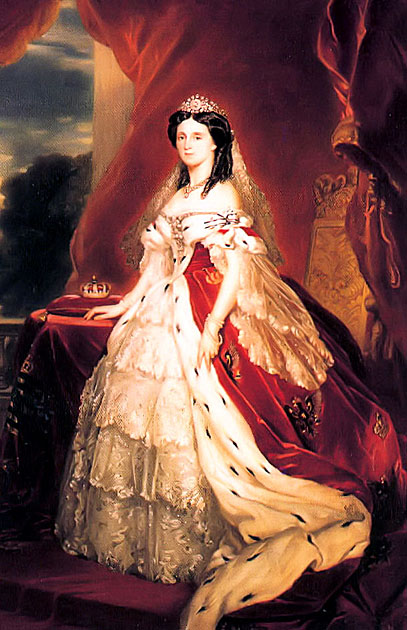
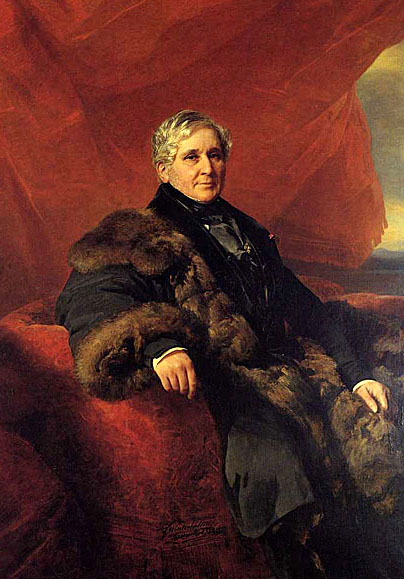
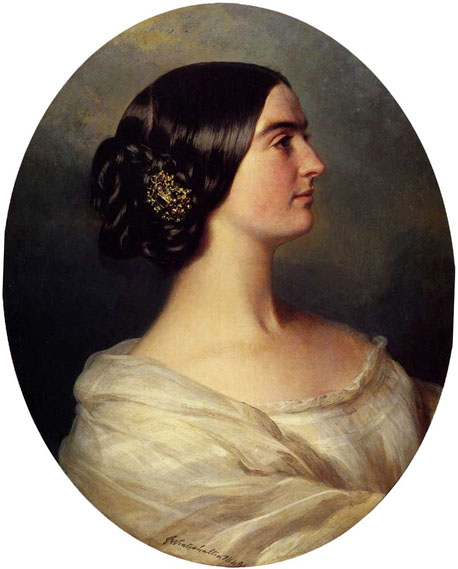
She was born Charlotte Stuart in Paris, a daughter of the British ambassador, Charles Stuart (later Baron Stuart de Rothesay) and was a Lady of the Bedchamber to Queen Victoria for thirteen years. On 5 September 1835, she married Hon. Charles Canning a son of the ex-British Prime Minister, George Canning and the 1st Viscountess Canning. In 1837, Charles succeeded to his mother's title as Viscount Canning, whereupon Charlotte became Viscountess Canning.
Lady Canning arrived in India in 1856 as a flourishing, healthy woman when her husband was appointed Governor-General of India. She went with him to Calcutta and described her situation as being 'isolated to a degree I could never have imagined'. She kept a journal and wrote frequently to Queen Victoria, at one point describing 'strange and terrible outbreaks' of violence which were the start of the 'Indian Mutiny'. In 1859, Charles was raised in the peerage as Earl Canning and Charlotte became Countess Canning. The Countess began to look emaciated in 1861 and she died of malaria in her husband's arms and was buried in Barrackpore, West Bengal.
Lord Canning did not long outlive her; his letter to Victoria describing her death crossed with the Queen's to him, announcing that Prince Albert had died. Lady Canning's name lives on in Bengal where a type of sweet called ledikeni is named after her.


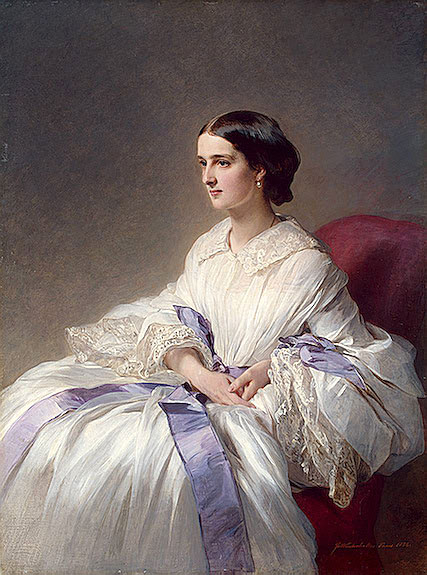
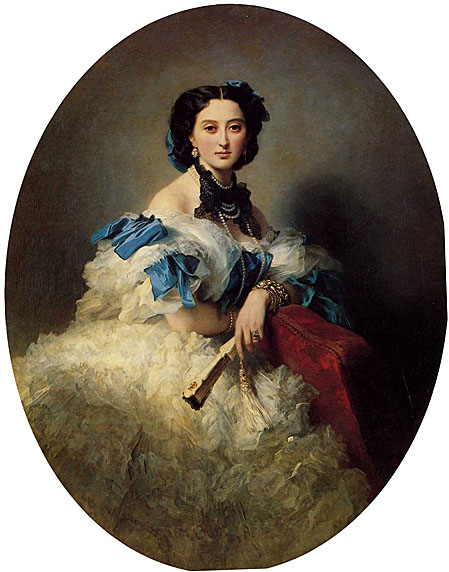
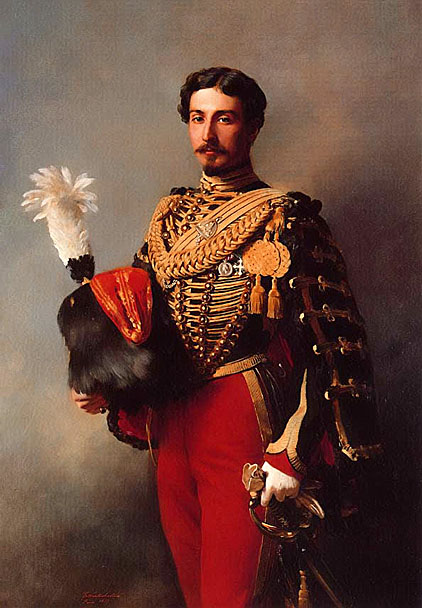

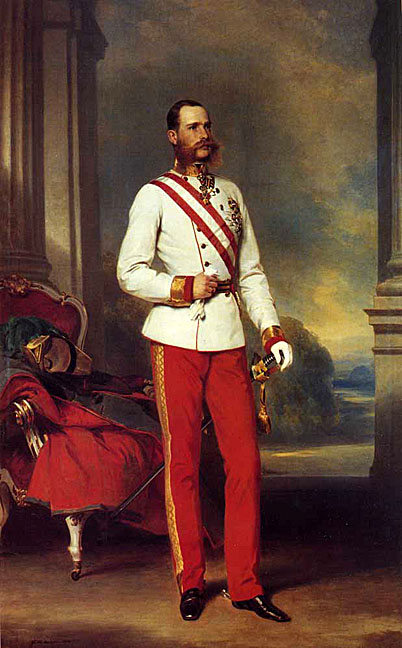
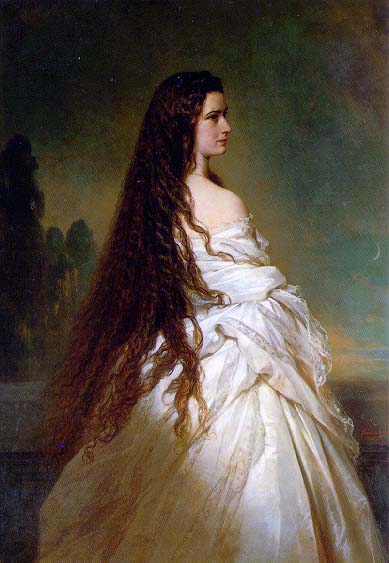
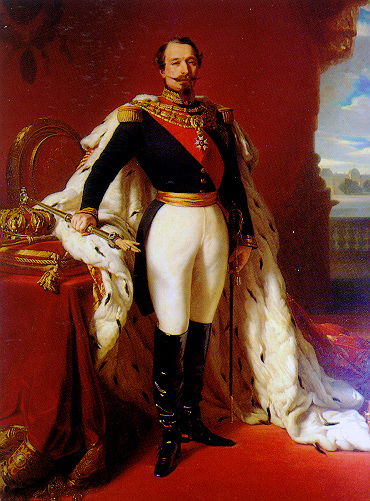
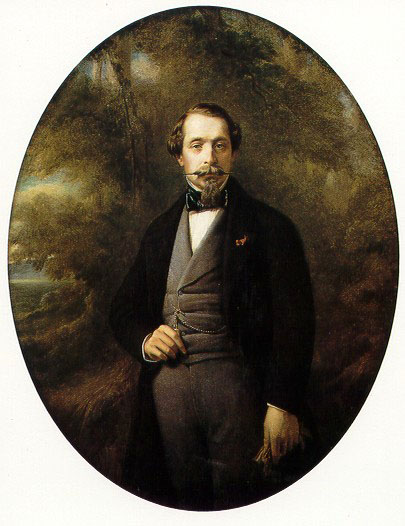
So it is a sovereign serene, at the height of his power, which has been Winterhalter is the portrait.
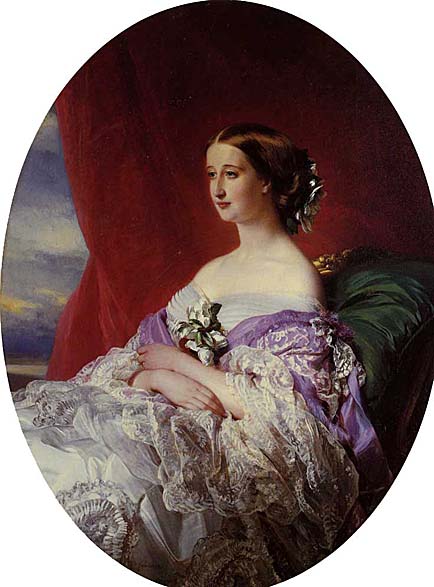
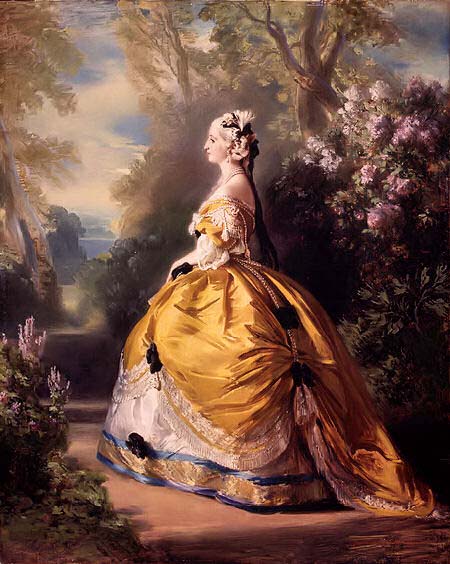
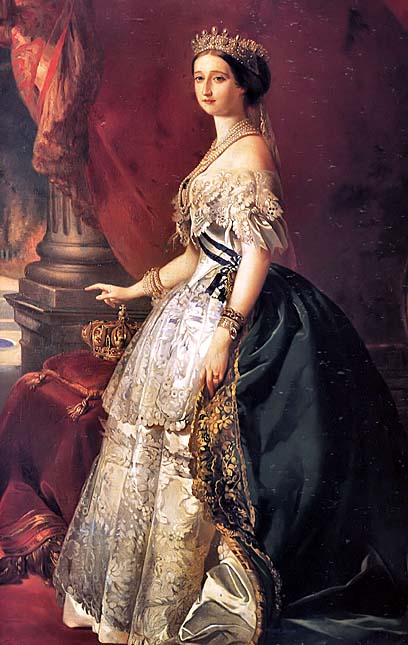
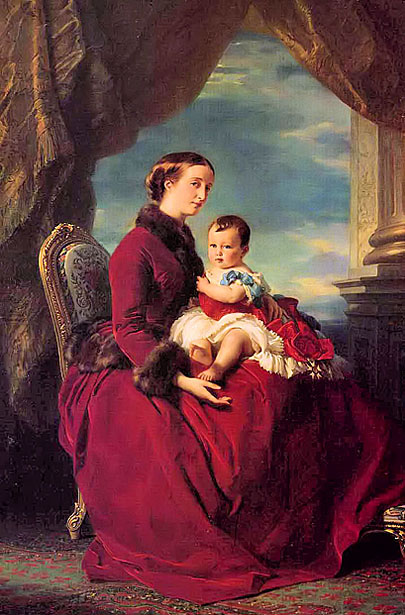
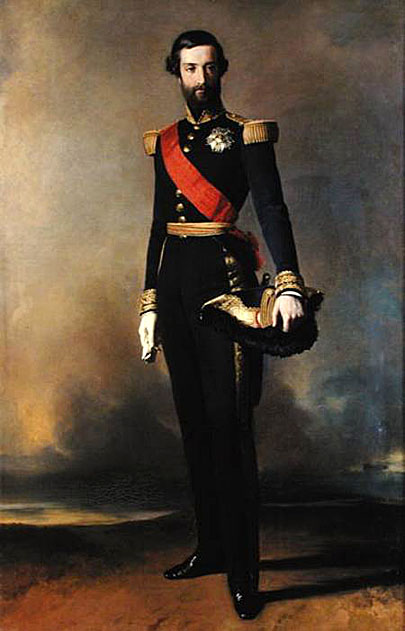

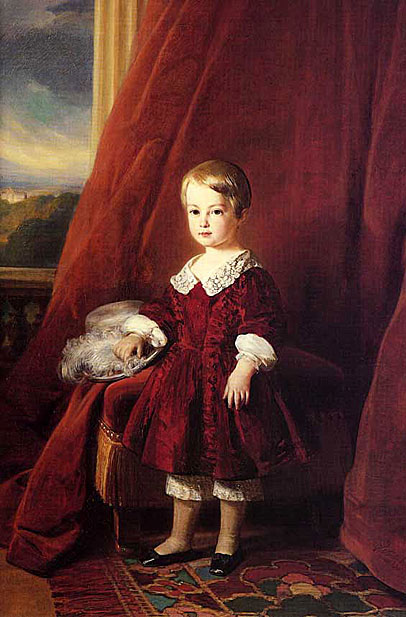
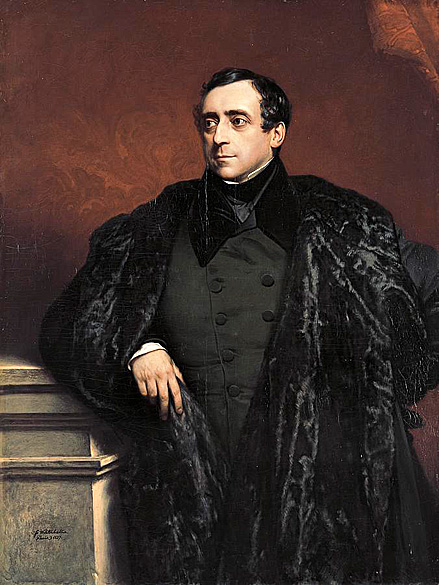
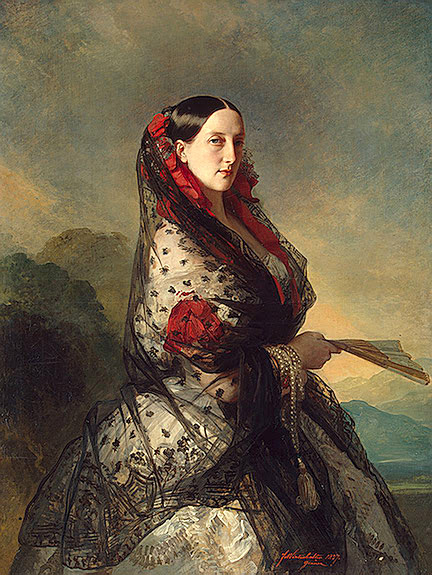
_1865.jpg)
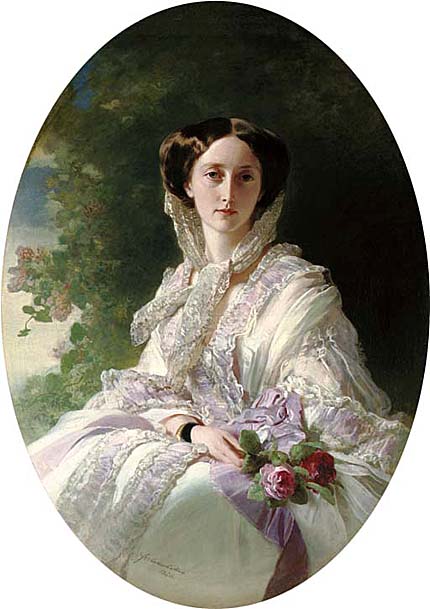
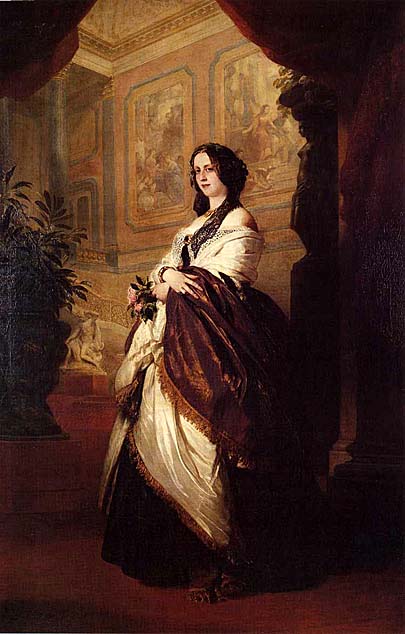
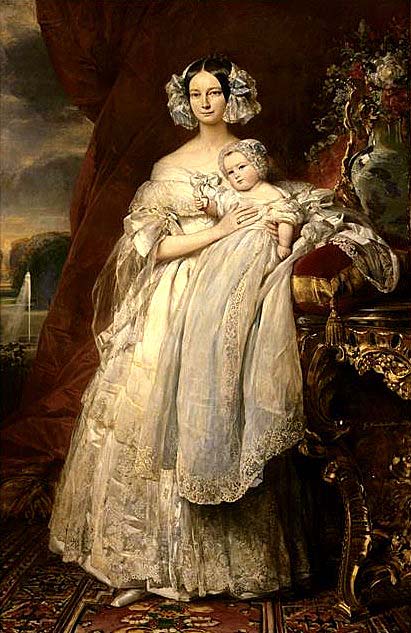
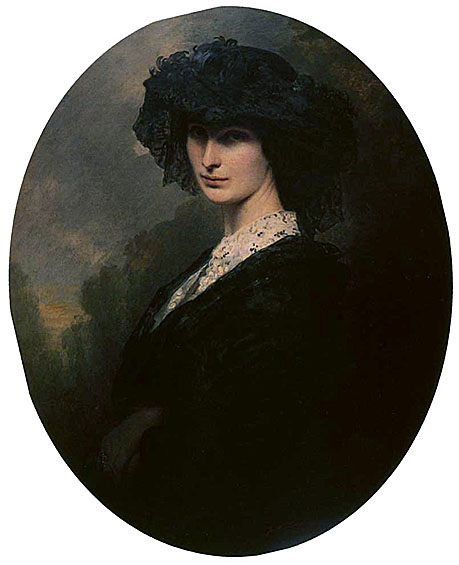
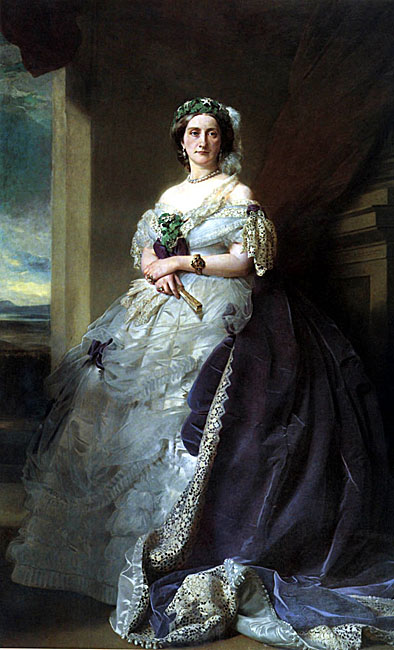

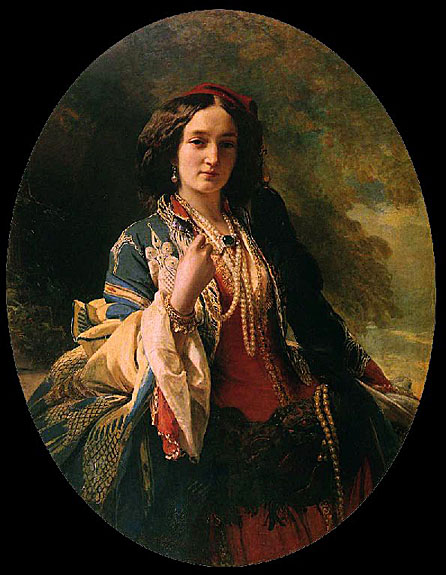
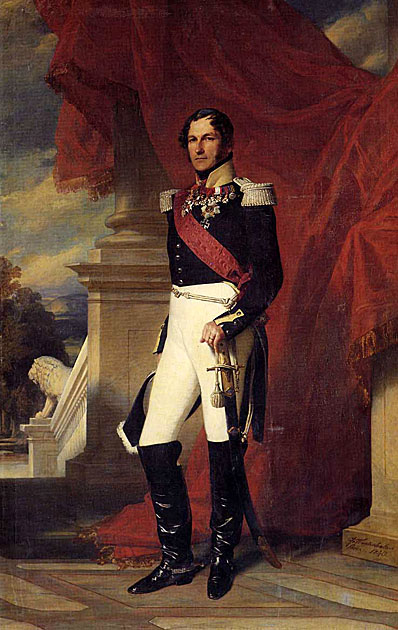
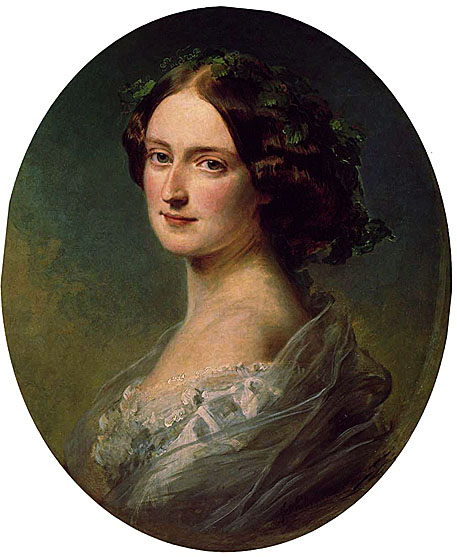
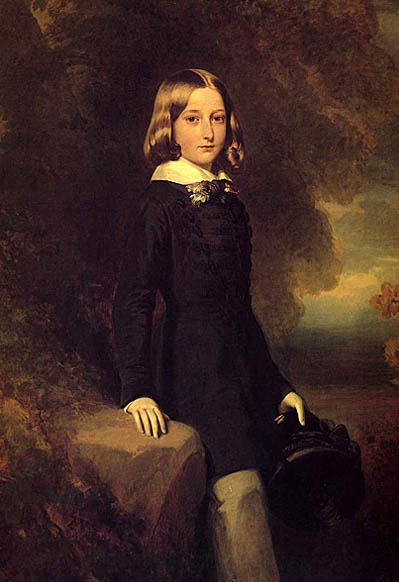
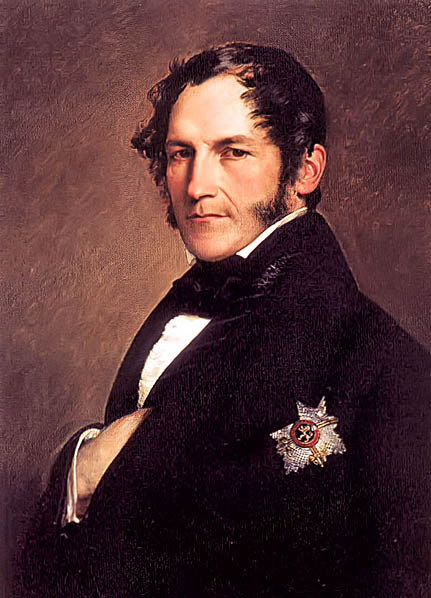
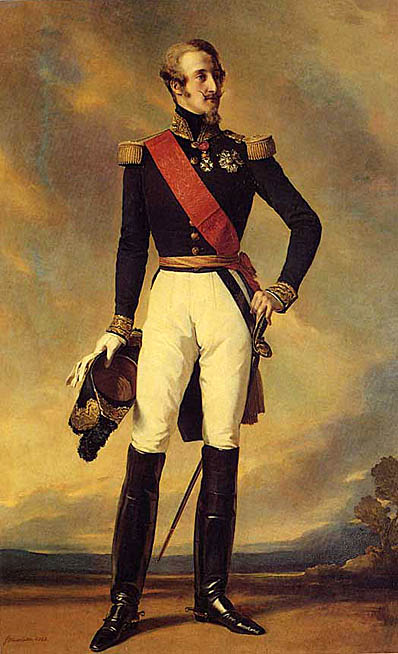
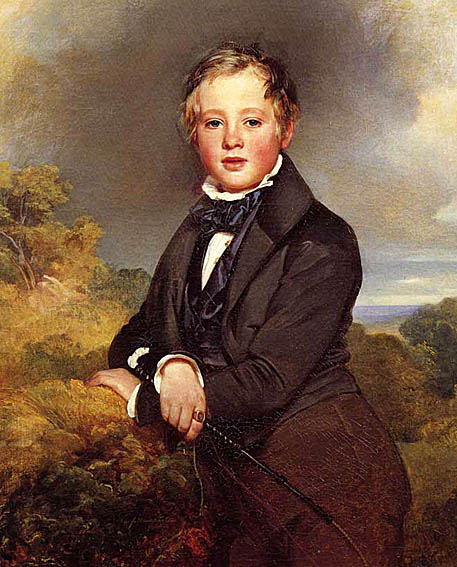
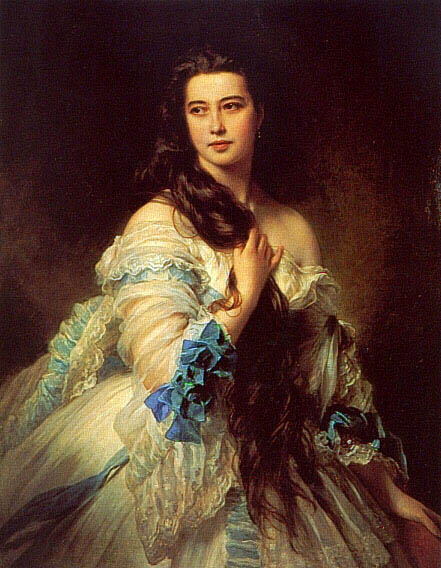
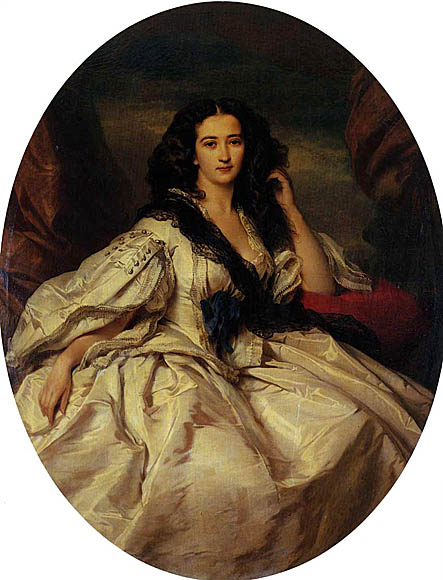
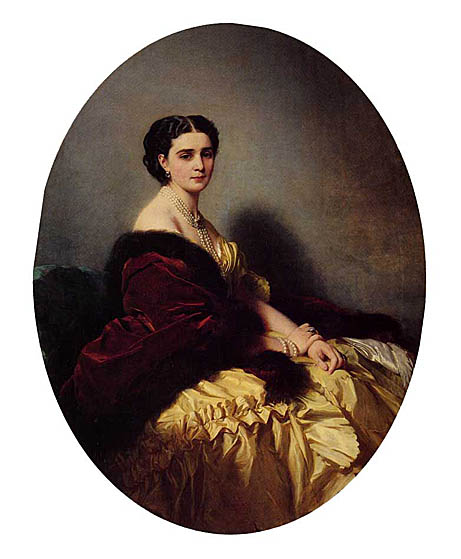
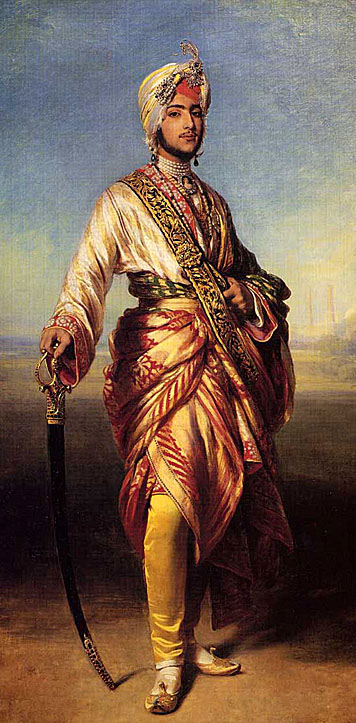
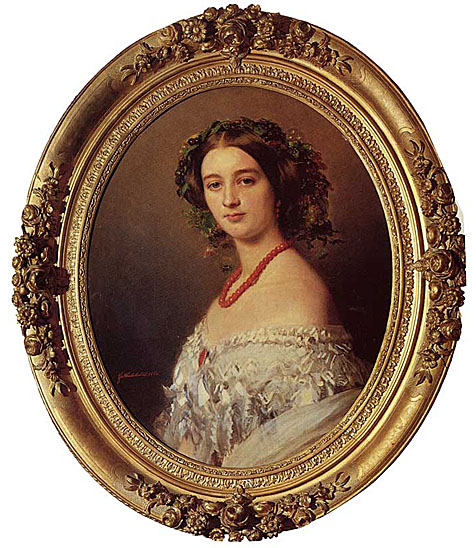
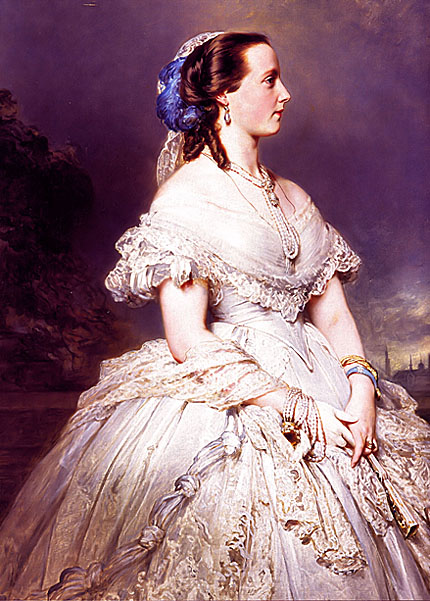
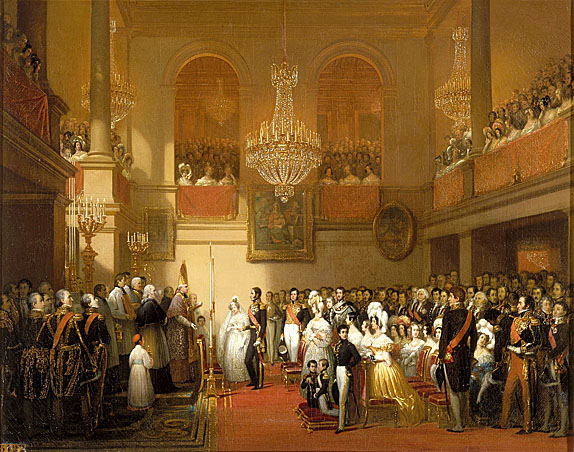
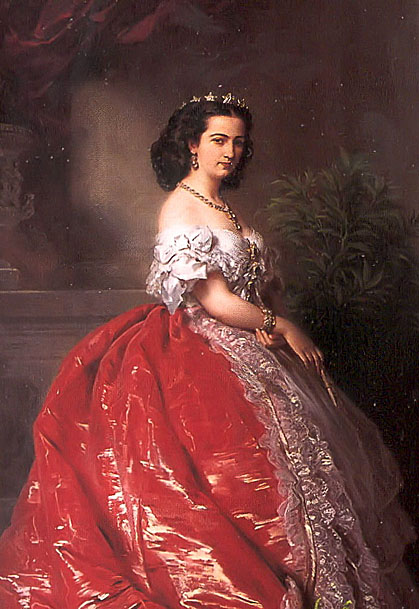

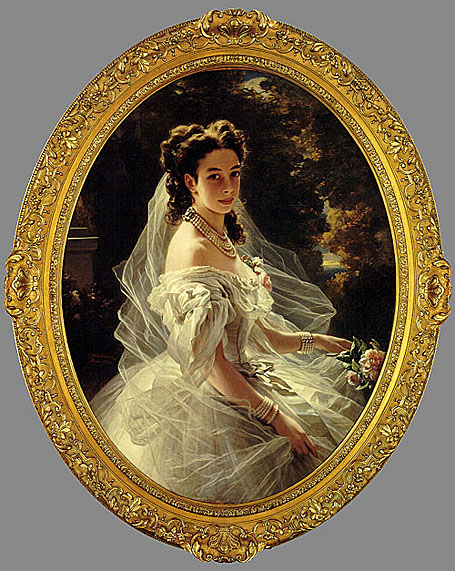
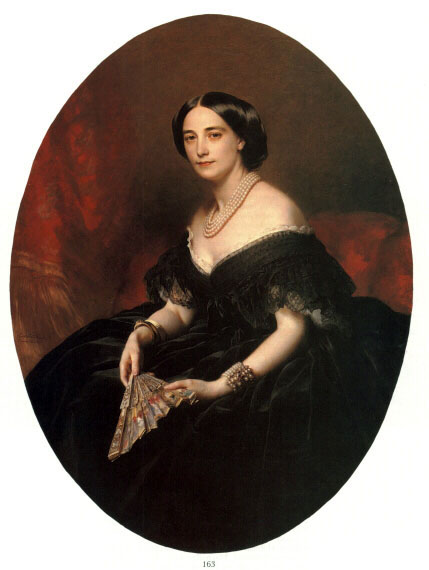
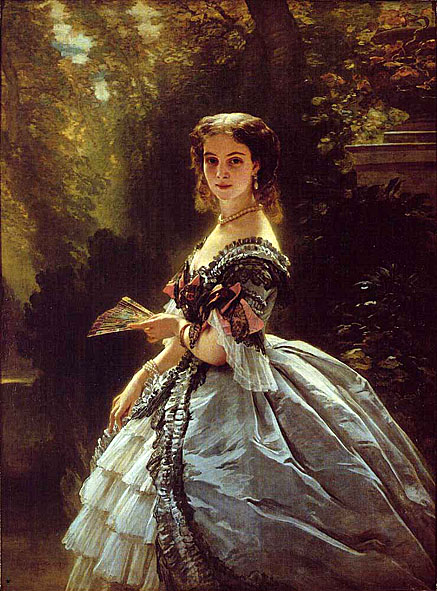

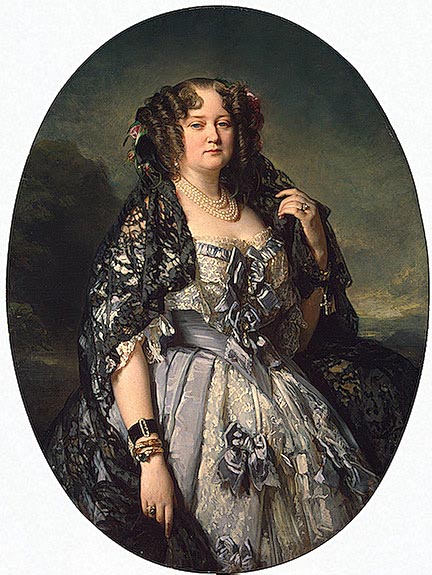

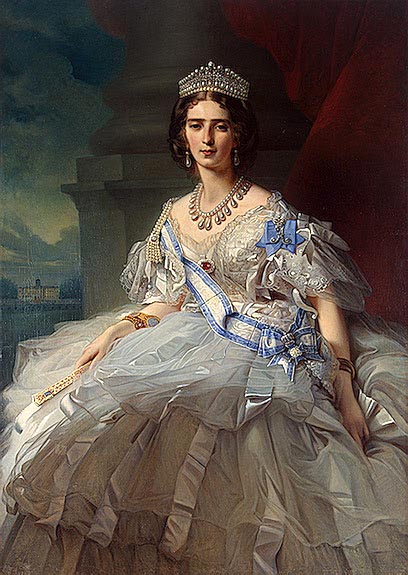
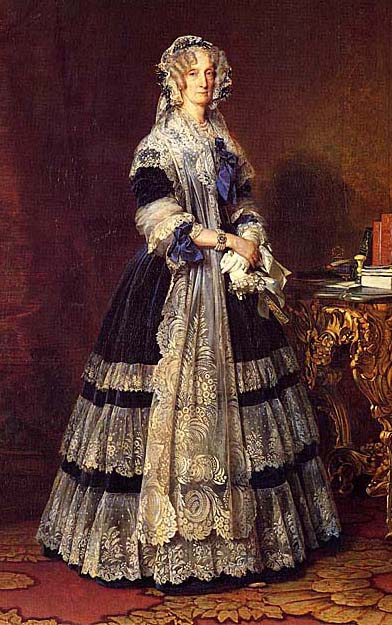
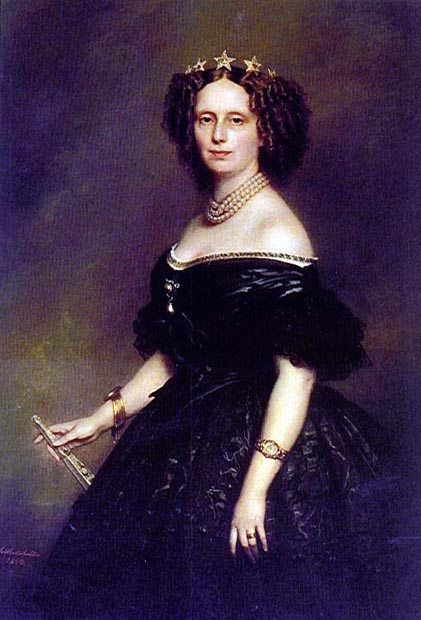
She was born in Stuttgart, her parents were King William I of Württemberg and Grand Duchess Catherine Pavlovna of Russia, the fourth eldest daughter of Tsar Paul I. Sophie and William were first cousins as their mothers were sisters. Shortly after Sophie's birth, her mother died, and she was cared for by her aunt, Catharina of Württemberg.
Prior to her marriage, King Otto of Greece and Duke William of Brunswick were possible suitors for Princess Sophie. The engagement with the first came to nothing because Princess Sophie's father had no confidence in the newly established Greek monarchy. Change prevented a proposal by the second candidate because it was rumored that Princess Sophie was already betrothed.
She married the Prince of Orange (later King William III) in Stuttgart on 18 June 1839. The couple returned to the Netherlands and established themselves at Noordeinde Palace and had three children. The marriage was not a success. King William's mother, whom he completely relied on, was totally against the marriage and treated her daughter-in-law and niece with disdain. Intellectually, Queen Sophie was far superior to her husband. Moreover, William III had several extramarital relations. She let it be publicly known that she found him inferior and unsuitable to be king and that she would do it better as a regent. Queen Sophie tried to separate from him, but this was refused; the state interest had to prevail. From 1855 the couple lived separately. She spent much of her time in Stuttgart, with her own family. Queen Sophie died at Huis ten Bosch Palace in The Hague. She was buried in her wedding dress, because, in her own view, her life had ended on the day she married.
Queen Sophie corresponded with several European scholars and maintained warm ties with Emperor Napoleon III and Queen Victoria. She protected and stimulated the arts, supported several charities, including animal protection and construction of public parks.




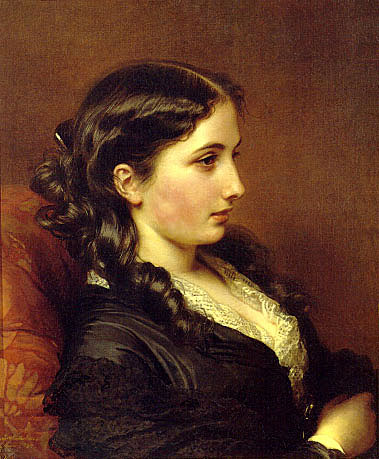
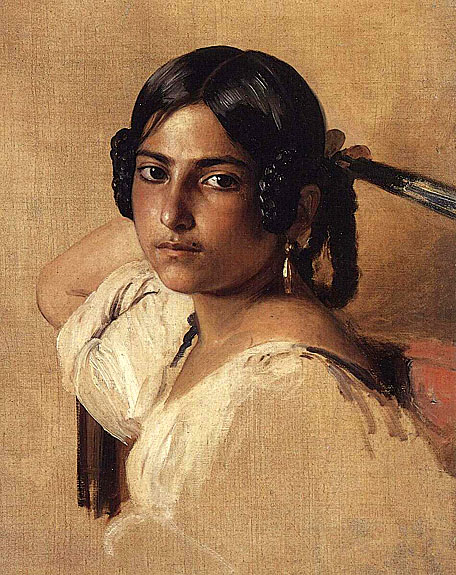

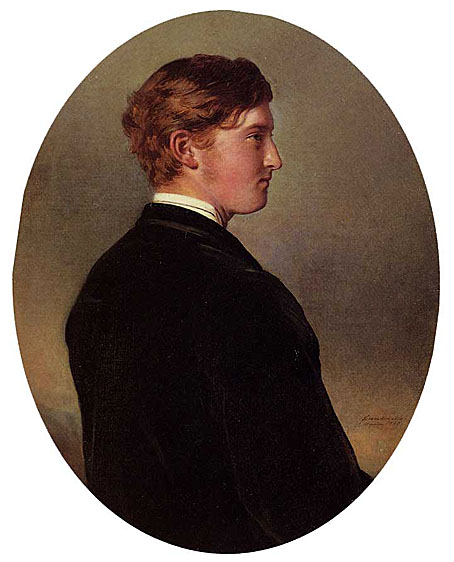
Source: Art Renewal Center
Return to Pagina Artis
Return to Bruce and Bobbie's Main Page.